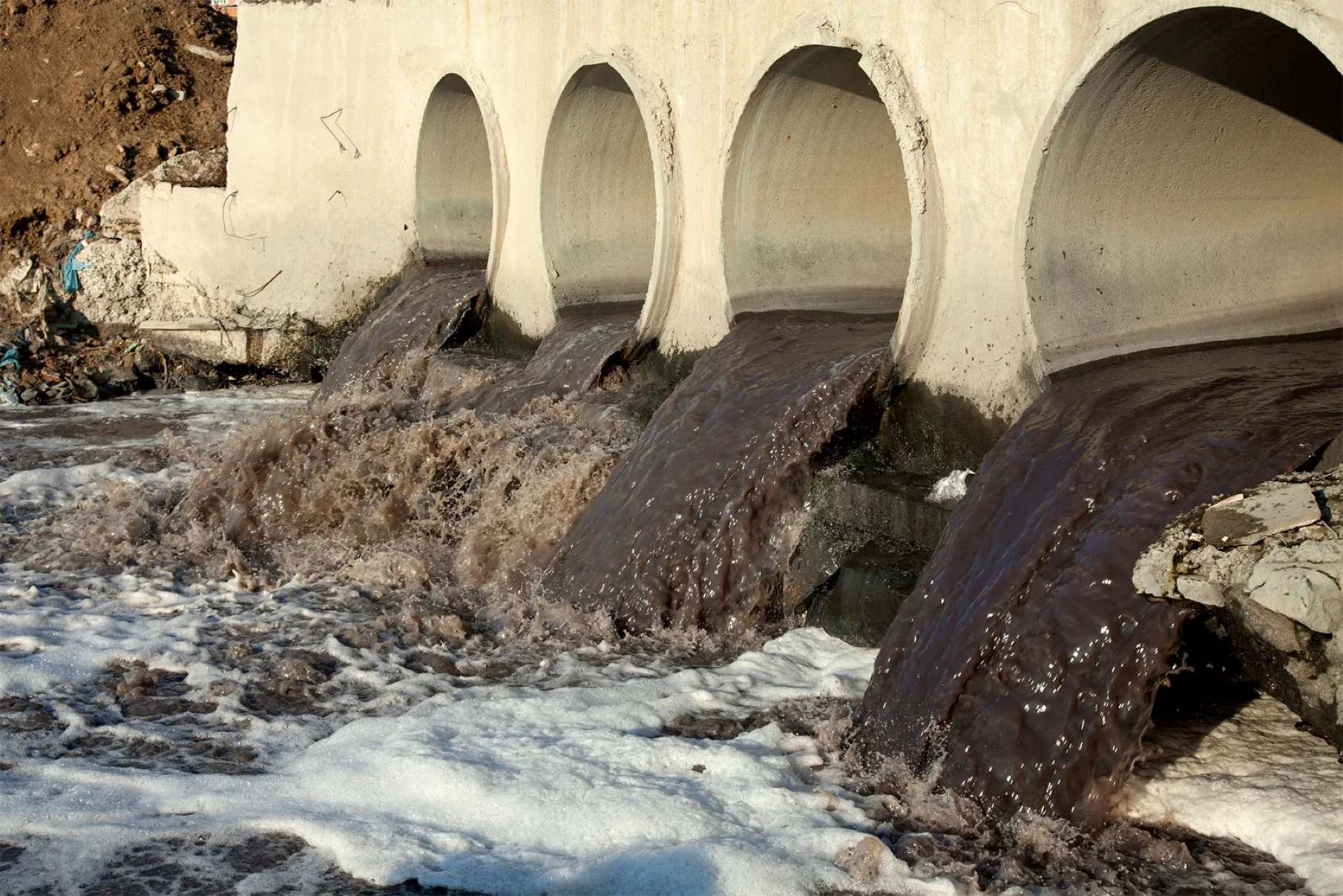
Sewage may not be the most glamorous topic to discuss, but it plays a vital role in our daily lives. From flushing toilets to draining sinks, sewage systems ensure the proper disposal of waste and help maintain public health and cleanliness. While many may shy away from the subject, there are interesting and important facts about sewage that are worth knowing. In this article, we will delve into 19 fascinating sewage facts that will not only educate you on the intricacies of waste management but also highlight the significance of proper sewage treatment for the environment and human well-being. So, prepare to be enlightened as we navigate through the hidden world of sewage!
Key Takeaways:
- Sewage treatment is vital for public health and environmental protection, removing harmful contaminants and preventing the spread of diseases.
- Proper sewage management, including treatment, monitoring, and public awareness, is crucial for a cleaner and healthier future.
Sewage is a combination of wastewater and solid waste.
When we flush toilets, drain sinks, or use industrial processes, the resulting mixture of liquid waste and solid particles is known as sewage.
Sewage is treated to remove harmful contaminants.
Before it is discharged back into the environment, sewage undergoes a series of treatment processes to remove pollutants and pathogens.
The sewage treatment process involves physical, chemical, and biological methods.
Treatment plants use a combination of processes, including screening, sedimentation, disinfection, and biological digestion, to clean the sewage effectively.
Sewage treatment plants play a vital role in protecting public health.
By removing harmful bacteria, viruses, and chemicals from sewage, treatment plants help prevent the spread of diseases and protect water sources.
Sewage can contain a wide range of pollutants.
From household chemicals and pharmaceuticals to heavy metals and microplastics, sewage can carry various contaminants that pose risks to human and environmental health.
Sewer systems are designed to transport sewage to treatment plants.
A network of underground pipes, known as sewers, connects residential, commercial, and industrial buildings to centralized treatment facilities.
Combined sewer systems carry both sewage and stormwater runoff.
Some older cities have combined sewer systems that transport both wastewater and rainwater, which can overflow during heavy rainfall and cause pollution in water bodies.
The process of sewage treatment can produce sludge.
During treatment, solid waste is separated from the liquid, resulting in sludge that requires further processing or disposal.
Sewage sludge can be used as fertilizer.
Treated sewage sludge, also known as biosolids, can be processed and used as a nutrient-rich fertilizer for agricultural purposes.
Sewage spills can have severe environmental consequences.
When sewage leaks or overflows occur, they can contaminate waterways, harm aquatic life, and disrupt ecosystems.
Proper maintenance of sewer systems is essential to prevent blockages and backups.
Sewage treatment contributes to energy production.
Through anaerobic digestion, wastewater treatment plants can generate biogas, a renewable energy source used for electricity and heat production.
Sewage systems require regular monitoring to ensure proper functioning.
Ongoing monitoring of sewage systems helps identify potential issues early on, allowing for timely repairs and maintenance.
Sewage treatment can be resource-intensive.
The treatment process requires significant energy, chemicals, and infrastructure, making it essential to explore sustainable alternatives and optimize efficiency.
Sewage can be recycled for non-potable uses.
In some regions, treated wastewater, also known as reclaimed water, is used for irrigation, industrial processes, and other non-drinking purposes.
Sewage management is a global challenge.
From improving sanitation in developing countries to upgrading aging infrastructure in developed nations, the proper management of sewage is crucial to public health and environmental protection worldwide.
Sewage treatment technologies continue to evolve.
Advancements in wastewater treatment processes and technologies are helping to improve overall efficiency, reduce environmental impacts, and enhance the quality of treated water.
Proper disposal of hazardous waste is essential in sewage management.
To prevent harmful chemicals from entering sewage systems, it is crucial to dispose of hazardous waste properly and educate the public about safe disposal practices.
Public awareness plays a vital role in sewage management.
By promoting water conservation, responsible use of household chemicals, and proper disposal practices, individuals can contribute to better sewage management and protect our water resources.
As we reflect on these 19 sewage facts, it becomes clear that proper sewage management is essential for the health and well-being of both humans and the environment. From its treatment processes to its potential environmental impacts, understanding sewage is crucial in addressing the challenges associated with urbanization and industrialization. By adopting sustainable practices, investing in infrastructure, and raising public awareness, we can pave the way for a cleaner and healthier future.
Conclusion
These 19 sewage facts shed light on the importance of understanding and managing wastewater. From its impact on the environment to the potential health and safety risks, sewage management plays a crucial role in creating a sustainable and healthy society.
By implementing effective sewage treatment systems and adopting environmentally friendly practices, we can minimize the pollution caused by untreated sewage. It is essential for individuals, communities, and governments to prioritize wastewater management to protect our water sources, ecosystems, and public health.
Through education and awareness, we can work together to develop innovative solutions and technologies that promote efficient sewage treatment and reduce the harmful effects of untreated wastewater. Let’s strive for a cleaner and healthier future for generations to come.
FAQs
1. What is sewage?
Sewage refers to the waste, primarily consisting of water and human or household waste materials, that is discharged from homes, businesses, and industries.
2. How is sewage treated?
Sewage is treated through a multi-step process that involves physical, biological, and chemical treatment methods. These processes remove harmful contaminants and pollutants, making the wastewater safe to be discharged back into the environment.
3. Why is sewage treatment important?
Sewage treatment is crucial to protect public health and the environment. It prevents the spread of diseases, reduces water pollution, and preserves the quality of our water sources.
4. What are the consequences of untreated sewage?
Untreated sewage can contaminate drinking water sources, harm aquatic life, and contribute to the spread of waterborne diseases. It also poses a risk to the environment and can lead to the degradation of ecosystems.
5. Who is responsible for sewage treatment?
Sewage treatment is a shared responsibility between governments, municipalities, and individuals. Governments often oversee the development and implementation of sewage treatment systems, while individuals and businesses play a role in minimizing their contribution to sewage pollution.
6. Can sewage be recycled?
Yes, sewage can be recycled through advanced treatment methods. The treated wastewater, also known as reclaimed water, can be used for various purposes such as irrigation, industrial processes, and even drinking water in some cases.
7. What can individuals do to help with sewage management?
Individuals can help with sewage management by practicing water conservation, properly disposing of waste materials, and avoiding the flushing of non-biodegradable items down the toilet. It is also important to support the implementation of effective sewage treatment systems in our communities.
8. Are there any alternative sewage treatment technologies?
Yes, there are alternative sewage treatment technologies like decentralized systems, constructed wetlands, and membrane bioreactors. These technologies offer innovative approaches to sewage treatment and can be particularly useful in remote or environmentally sensitive areas.
9. How does sewage impact marine life?
Untreated sewage can introduce harmful pathogens, chemicals, and excessive nutrients into marine ecosystems. This can lead to the decline of marine life populations, eutrophication, and the creation of dead zones where oxygen levels are too low to support aquatic organisms.
10. What is the role of technology in sewage management?
Technology plays a vital role in sewage management by facilitating efficient treatment processes, monitoring systems, and the development of advanced treatment technologies. It can help optimize sewage treatment operations and improve overall system performance.
Sewage management may not be the most glamorous topic, but understanding its importance is crucial for maintaining public health and protecting the environment. If you found these sewage facts intriguing, consider exploring the ancient Assyrian city of Nineveh, learning about septic systems, or discovering the best portable carpet and upholstery cleaners to keep your home clean and hygienic.
Was this page helpful?
Our commitment to delivering trustworthy and engaging content is at the heart of what we do. Each fact on our site is contributed by real users like you, bringing a wealth of diverse insights and information. To ensure the highest standards of accuracy and reliability, our dedicated editors meticulously review each submission. This process guarantees that the facts we share are not only fascinating but also credible. Trust in our commitment to quality and authenticity as you explore and learn with us.


